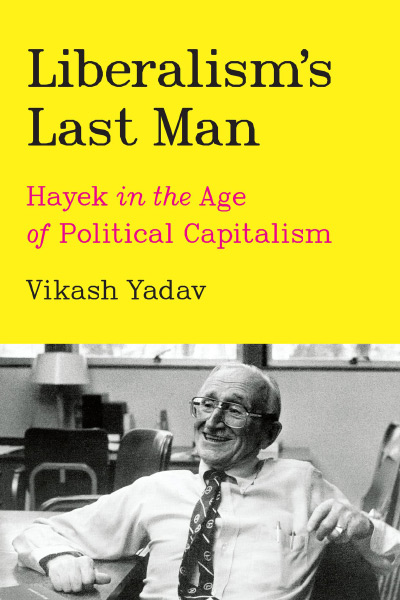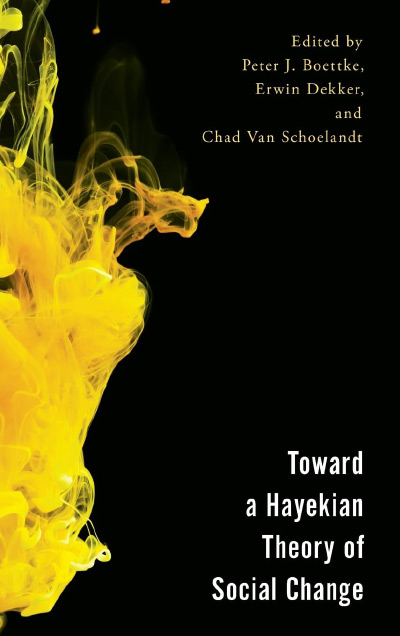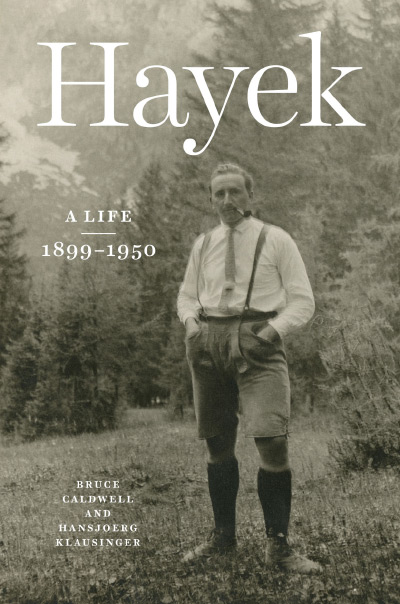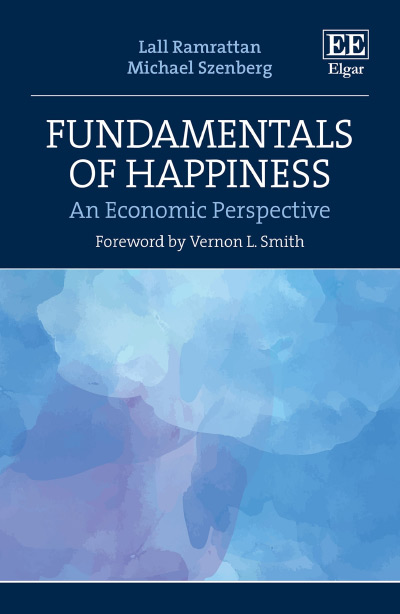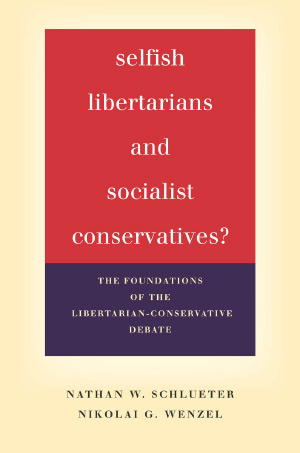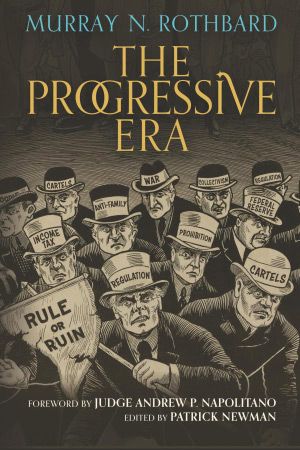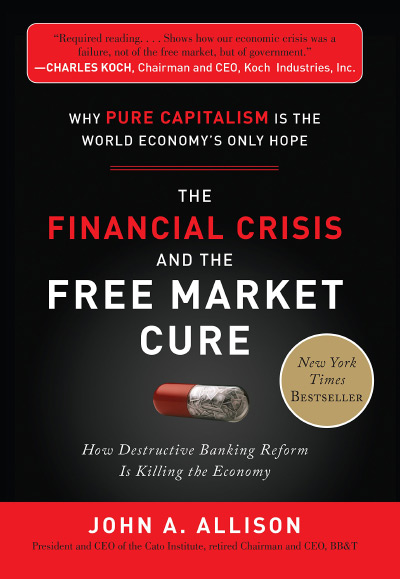Thomas Sowell’s On Classical Economics is about how little Sowell thinks of classical economics, not a critical restatement of classical economic principles to assist modern economic analysis or policymaking. Moreover, it is the dissenters from classical economic principles, in particular, Thomas Malthus, J. C. L. Sismondi and Karl Marx, whom Sowell credits with superior insights. Readers may be attracted by the facts that Sowell wrote two books on classical economics (1972 and 1974) and that he currently writes a weekly newspaper column on topical issues from a perspective many might think reflects classical economic principles. But the book seriously disappoints. Half of the eight chapters are merely a reprint of Sowell’s Classical Economics Reconsidered (Princeton, N.J.: Princeton University Press, 1974), with no attention to the secondary literature since the late 1960s. He repeats claims that have been corrected since the early 1970s, especially on the classical theory of value and Say’s Law of markets. The other four chapters also do not benefit from the secondary literature written since the early 1970s. Thus, accepting Sowell’s conclusions about classical economics without verification would amount to a four-decade retreat in scholarship. Sowell’s copious referencing of the primary literature in his “rapid-fire” style of summarizing classical arguments—often three or four or sometimes even eight (p. 30) citations within a sentence—may give the appearance of reliable scholarship, but several of the citations I checked appear inconsistent with Sowell’s interpretations. Thus, to anyone familiar with the classical literature, the book may be quite frustrating. In the hands of someone attempting to understand classical economics, it may be quite misleading.
Chapter 1, “Social Philosophy of Classical Economics,” discusses the views of such classical writers as Adam Smith, David Ricardo, Thomas Malthus, and John Stuart Mill on varying issues, including social classes, in particular landlords, businesspeople, and the poor; the proper role of government; war; and slavery. Sowell correctly identifies Smith as having discussed these issues most comprehensively, and because of the various writers’ differing emphases, he concludes that there “was . . . no rigid doctrinaire position on social policy in general or on the specific issues of the day” (p. 19), although laissez-faire was the basic frame of reference. A discussion of Jeremy Bentham’s utilitarianism and its influence on those economists who argued for more government intervention, in particular J. S. Mill, would have been helpful.
Sowell’s treatment of classical macroeconomics in chapter 2 is less in accord with the current interpretation of Say’s Law of markets and the classical quantity theory of money. He dwells on the wrong arguments by Thomas Chalmers, Sismondi, Malthus, and James Maitland, Earl of Lauderdale about the possibility of too much production of all goods, including money, in a country—all up against the clarifications of Smith, J.-B. Say, James Mill, Ricardo, and J. S. Mill. Sowell finds more accuracy in the dissenters’ views because he denies that proponents of the law used dynamic analysis and insists that the dissenters did so. He also alludes to Say’s willingness to modify his original argument as being “subject to some restrictions” (p. 31), but he does not explain these restrictions, thus leaving the wrong impression that the law is not totally defensible. He gives no prominence to David Hume’s 1752 essay “Of Money” as the foundation of the classical quantity theory of money and the forced-saving doctrine, restated by the likes of Bentham, Henry Thornton, Ricardo, and J. S. Mill. His summaries, however, are a good counter to Keynesian views on these matters.
Sowell also gives a useful account of Smith’s and Ricardo’s views on government spending as a substitute for private spending, but one that may yet retard economic growth. However, he mars this summary by giving undue prominence to the erroneous counterclaims of Lord Lauderdale and William Blake, assigning them the insight of dynamics and denying the same to those whom they criticize. Strange that in chapter 2 Sowell finds no need to discuss the classical economists’ theory of interest, easily the most misunderstood of their principles in modern economics, except with a passing reference on page 37.
Chapter 3 is devoted to explaining classical microeconomics, including the theories of rent, profit, and value. Sowell well illustrates the Ricardian theory of rent but gives an undue emphasis to Ricardo’s quibbles with Smith on the inverse wage-profit relation in an economy experiencing diminishing returns in agriculture. He also discusses Malthus’s population theory, mainly to register his own belief that Malthus’s arguments have no empirical support whatsoever. “Man’s food consists of plants and animals, which almost all reproduce in a shorter period of time and with more numerous offspring than man” (p. 57); thus, there is no threat of food scarcity as Malthus had warned. The counterclaims of Malthus’s critics, including Sismondi, Nassau Senior, and Richard Whately, are the basis for Sowell’s dismissal of modern references to starvation in some Third World countries as an affirmation of Malthus’s point.
Quite surprising in this chapter is Sowell’s failure to clarify Smith’s use of labor as a measure of value rather than as the determinant of exchange values (relative prices)—for Smith, the determinants are supply and demand in the short run and costs of production in the long run. Sowell appears to be unaware of J. S. Mill’s clarification of that distinction in Smith’s and Malthus’s works: “To confound these two ideas [a measure of value and the determinant of value] would be much the same thing as to overlook the distinction between the thermometer and the fire” (Principles, book 3, chap. 15, p. 581). From his failure to recognize this point, Sowell is never able to absolve the classical authors, with the possible exception of Ricardo, from the false charge that they argued a labor theory of value. He also fails to notice that Smith, Ricardo, and J. S. Mill based demand on utility, so he draws the wrong conclusions from their analysis. Besides the classical texts themselves—in particular book 3, chapters 1–6, in Mill’s Principles—Sowell could have benefited from some modern reaffirmations of the classical theory of value (for example, Samuel Hollander’s Classical Economics [New York: Blackwell, 1987]) and therefore refrained from arguing for a “marginalist [utility] revolution” (p. 152; see also pp. 78, 196–97) during the 1870s. He also may be unaware of Mark Blaug’s “Was There a Marginal Revolution?” (History of Political Economy 4 [1972]: 269–80) and of Blaug’s Economic Theory in Retrospect (5th ed., New York: Cambridge University Press, 1996), which clarify these points.
Chapter 4, “Classical Methodology,” focuses on the views of Ricardo, Malthus, Say, J. S. Mill, and such lesser-known figures as Samuel Bailey, Senior, Sismondi, and Richard Jones regarding the appropriate method in economic analysis: inductive, deductive, or a combination of the two. Sowell (pp. 101–2) follows Joseph Schumpeter in charging that Ricardo made little use of facts, but employed abstractions to deduce his conclusions, and is thus perhaps unaware of Samuel Hollander’s (1987, 335–36) refutation of this charge. While crediting J. S. Mill with having best “exemplified and elaborated classical methodology,” Sowell reaches no firm conclusions regarding appropriate method, except to say that “[m]any of the basic methodological issues of modern economics were raised and explored during the classical period, though not ultimately settled then any more than today” (p. 102).
In chapter 5, “Sismondi: A Neglected Pioneer,” Sowell seeks to remedy the neglect accorded Sismondi in modern economics, even though his “work was marred by a lack of intellectual rigor and was [so] noted by his contemporaries as well as [by] later commentators” (p. 104). The case Sowell makes for taking Sismondi’s work seriously includes his having disputed the validity of Say’s Law of markets; having written down an equation of equilibrium income determination in which the next period’s income is 2.5 times the current period’s wages fund; having disputed Malthus’s population theory on the basis that “the multiplication of vegetables follows a geometric progression infinitely more rapid than that of animals, and the latter is in its turn infinitely more rapid than that of men” (p. 120); and having opposed “‘systems’ in political as well as economic theory” because “[e]conomics could not be based ‘on a mathematical succession of theorems, deduced from obscure maxims, given as indisputable truths’” (p. 124). Sowell also attributes to Sismondi the ability to bring to the “surface the difference between dynamic analysis and the comparative statics of the Ricardians” (p. 127). I doubt, however, that Sowell’s claims are sufficient to justify our taking Sismondi more seriously.
Sowell believes that J. S. Mill has an overrated positive image in the literature and aims to correct that image in chapter 6, “The Enigma of John Stuart Mill.” He first sketches Mill’s personal life as one “woefully lacking in understanding or empathy with those around him, including members of his own family” (p. 129), illustrating that claim with Mill’s bizarre love life with Mrs. Harriet Taylor. He repeats the charge that Mill snuffed out “the early beginnings of a utility theory of value and a schedule concept of demand” (p. 134) and chides Mill for failing to refer directly to Sismondi’s and Malthus’s statements on gluts or to “the leading socialist writer of all time—Karl Marx” (p. 137), thus violating Mill’s own precepts in Essays on Some Unsettled Questions (pp. 135–6). Sowell states that Mill was an elitist, contrary to his image as a defender of individual liberty owing to his essay “On Liberty.” He also holds against Mill’s reputation the fact that Mill completed his Principles of Political Economy in barely eighteen months. Sowell does a good job of criticizing Mill’s efforts to separate the laws of production from those of distribution (pp. 147–49), but he is on shaky ground in denying George Stigler’s assessments of Mill’s contributions to price theory (pp. 150–51).
In chapter 7, “The Mysteries of Marxian Economics,” Sowell argues that because of Marx’s obtuse and scattered writing style, sometimes meant to set “traps” for readers (p. 182), “so many economists have misunderstood him” (p. 155), but he cites references from only the 1950s and 1960s in illustration of this argument. Hollander’s 1987 treatment of Marx’s scholarship is an easy counter to the claim. Although Sowell repeats his attribution of the labor theory of value to the “classical economists” (p. 163), he credits Marx with criticism of the very labor theory without which Marx’s critique of capitalism would not stand: “While Marx followed Ricardo in seeing the value of a commodity as the labor time that went into its production, this was for Marx simply a definition, rather than a theory of prices” (p. 163, emphasis in original). In illustrating the supposedly more enlightened Marxian view of price determination by supply and demand, Sowell (pp. 166–67) quotes, without criticism, an 1844 statement from Engels in which changes in supply and demand are confused with changes in quantities supplied and demanded.
Say’s Law explains the equation of supply and demand for goods, services, and capital in the marketplace, but Sowell credits Marx with a more enlightened version that focuses on individuals’ equations of their own supplies and demands (p. 174). He quotes Marx’s allusions to changing relative prices and interest rates as possible sources of adjustment to equilibrium; although these very processes are described most clearly by Ricardo and J. S. Mill, Sowell credits Marx with the more useful insight that “beyond some magnitude of imbalance, this no longer worked” (p. 176). The crucial magnitude is not clarified. Indeed, Sowell’s praises of Marx extend to his view that, contrary to what took place following revolutions inspired by Marx’s arguments, “he [Marx] saw the desirable features of a [‘post-revolutionary’] government as including universal suffrage and civil liberties—what people today loosely call democracy . . . [akin to] nineteenth-century laissez-faire liberal[ism]” (p. 192). Sowell does not deal with the incompatibility of Marx and Engels’s war on private property with the existence of civil liberties under democratic laissez-faire liberalism.
In the concluding chapter, “Thoughts on the History of Economics,” Sowell departs from the now generally accepted view that we study the history of economics so we may learn how and why theories developed or evolved, recognize the errors in those discarded, and draw insights for handling current problems in theory construction and policy formulation. Rather, he thinks that studying the history of economics is worthwhile only so that one may be considered “an educated individual” (p. 188). He wonders if all the useful aspects of classical economics have not already been “incorporated into the latest textbooks, with the classical insights rendered into diagrams and equations, and the classical errors and misstatements decently buried without fanfare” (p. 188)—the “absolutist” view of theories’ development. Sowell appears oblivious of Kenneth Boulding’s “After Samuelson, Who Needs Adam Smith?” (History of Political Economy 3 [1971]: 225–37) and of Mark Blaug’s “No History of Ideas, Please, We’re Economists” (Journal of Economic Perspectives 15 [2001]: 145– 64), which argue the contrary view.
Sowell also downplays the role of economic events in prompting new theory construction, placing more weight on a discipline’s “own internal pressures to resolve the inevitable ambiguities and puzzles that arise in the course of groping for truth and clarity” (p. 196), a viewpoint drawn from Stigler. The evolution of theories, particularly in macroeconomics, would indicate otherwise. Thus, Sowell wonders whether Keynes’s General Theory “would have been such an instant and runaway success had it arrived during the prosperity of the 1920s rather than during the Great Depression of the 1930s” (p. 201). But Keynes wrote that book specifically to address problems of a depression economy under the erroneous presumption that extant “classical” principles were inadequate.
In On Classical Economics, Sowell seeks to reflect “on a lifetime of research in the field [the history of economic thought] that first attracted [him] to economics” (p. viii), but the field has developed considerably since the early 1970s, even as the subject has been deemphasized in most universities’ economics curriculum. Sowell’s failure to keep up with the literature since the 1970s thus should caution prospective readers to verify his numerous references, in particular those that appear counter to their expectations. For example, I would not interpret Smith’s arguments that “[i]n all great countries the greater part of the cultivated lands are employed in producing either food for men or food for cattle. The rent and profit of these regulate the rent and profit of all other cultivated land” (Wealth of Nations [New York: Modern Library 1937], p. 152) and “the rent of the cultivated land, of which the produce is human food, regulates the rent of the greater part of other cultivated land” (p. 159) by saying, as Sowell does, that “Adam Smith had long before [J. S. Mill] recognized that rent was a price-determining production cost when the land had alternative uses” (p. 151). Ricardo is also well known for recommending tax, trade, and monetary policies for economic growth. It thus appears inconsistent to interpret his argument that “[i]t has been well said by M. Say that it is not the province of the Political Economist to advise:—he is to tell you how you may become rich, but he is not to advise you to prefer riches to indolence, or indolence to riches” (Works [Cambridge: Cambridge University Press, 1951], 2: 338), to mean “Ricardo disavowed any intention to advocate growth-promoting policies in general” (Sowell, p. 33). I also would interpret Ricardo’s argument cited on page 69 as a leftward shift of the supply curve rather than as a rightward shift of the demand, as mentioned on page 70. Sowell also credits several writers with being the “first” to have said or done something (e.g., pp. 32, 45, 68, 100, 104, and 175). I would investigate these claims further before repeating them.
| Other Independent Review articles by James C. W. Ahiakpor | ||
| Summer 2008 | Mystifying the Concept of Capital: Hernando de Soto’s Misdiagnosis of the Hindrance to Economic Development in the Third World | |
| Spring 2008 | Letters to the Editor | |
| Spring 1999 | Ethnic Diversity, Liberty and the State: The African Dilemma | |
| [View All (4)] | ||



